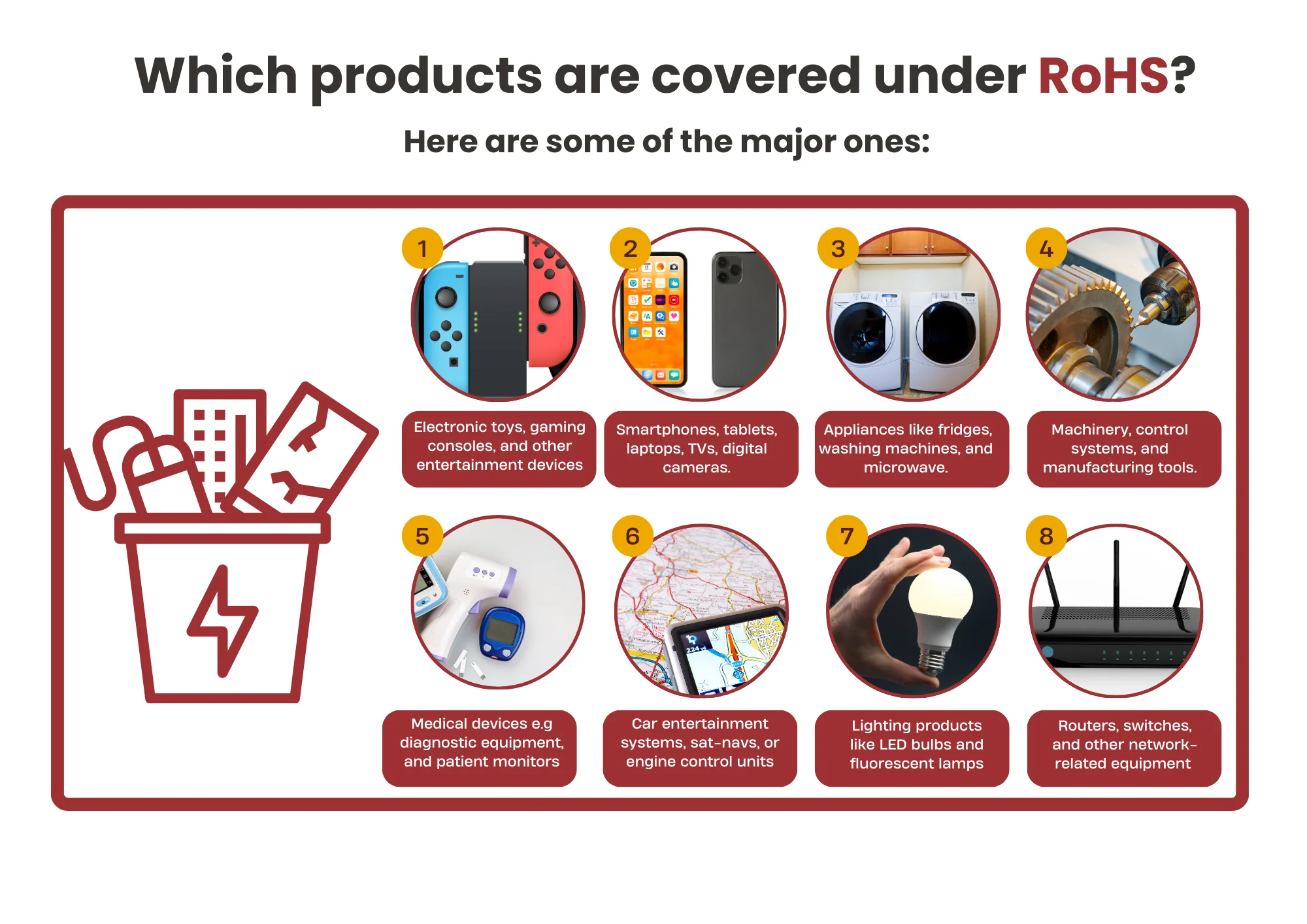
Does a product have to have RoHS certification?
RoHS now impacts the entire electronics industry. Any company placing electronic products, sub-components, or components on the EU market must comply with these RoHS3 requirements, with exceptions for medical devices (including in vitro medical devices) and monitoring instruments (including industrial monitoring and control instruments). New products manufactuRED within the Union, as well as all products and components imported from third countries, must comply with the applicable Union harmonization legislation. Electronics manufacturers are required to maintain records to demonstrate compliance and retain the EU Declaration of Conformity for at least 10 years after the EEE is placed on the market.

Scope of RoHS
- EU Member States (27 countries): France, Germany, Italy, Netherlands, Belgium, Luxembourg, UK, Denmark, Ireland, Greece, Spain, Portugal, Austria, Sweden, Finland, Cyprus, Hungary, Czech Republic, Estonia, Latvia, Lithuania, Malta, Poland, Slovakia, Slovenia, BULgaria, Romania.
Product Categories Covered by the EU RoHS Directive
1. Household appliances
2. Lighting equipment
3. IT and telecommunications equipment
4. Electrical tools
5. Hardware accessories
6. Low-voltage electrical devices and electronic components
7. Toys, leisure, and sports equipment
8. Vending machines
9. Medical and monitoring equipment
10. Consumer equipment
11. Other electrical and electronic equipment
10 Hazardous Substances Targeted by RoHS
RoHS applies to all electrical and electronic products, as well as raw materials that may contain the following hazardous substances. These include:
1. Lead (Pb): Examples of use: solder, glass, PVC stabilizers.
2. Mercury (Hg): Examples of use: thermostats, sensors, switches, relays, bulbs.
3. Cadmium (Cd): Examples of use: switches, springs, connectors, housings, PCBs, contacts, batteries.
4. Hexavalent Chromium (Cr6+): Examples of use: anti-corrosion coatings on metal.
5. Polybrominated Biphenyls (PBBs): Examples of use: flame retardants in PCBs, connectors, plastic casings.
6. Polybrominated Diphenyl Ethers (PBDEs): Examples of use: flame retardants in PCBs, connectors, plastic casings.
7. BIS(2-ethylhexyl) phthalate (DEHP):
8. Butyl benzyl phthalate (BBP):
9. Dibutyl phthalate (DBP):
10. Diisobutyl phthalate (DIBP):
Of these, cadmium content is strictly regulated to not exceed 0.01%.
China JJR Laboratory offers ROHS certification services. Feel free to inquire!
Email:hello@jjrlab.com
Write your message here and send it to us
 WEEE Registration for Waste Electrical &Electr
WEEE Registration for Waste Electrical &Electr
 MSDS Chemical Safety Testing
MSDS Chemical Safety Testing
 What Are the Differences Between UK REACH and EU R
What Are the Differences Between UK REACH and EU R
 E-Cigarette GB 41700 Compliance Testing
E-Cigarette GB 41700 Compliance Testing
 What Are the Testing Items of California Propositi
What Are the Testing Items of California Propositi
 E-Cigarette EU TPD Testing
E-Cigarette EU TPD Testing
 Testing Certification for E-cigarettes Exported to
Testing Certification for E-cigarettes Exported to
 What is Amazon US CPC Certification?
What is Amazon US CPC Certification?
Leave us a message
24-hour online customer service at any time to respond, so that you worry!




